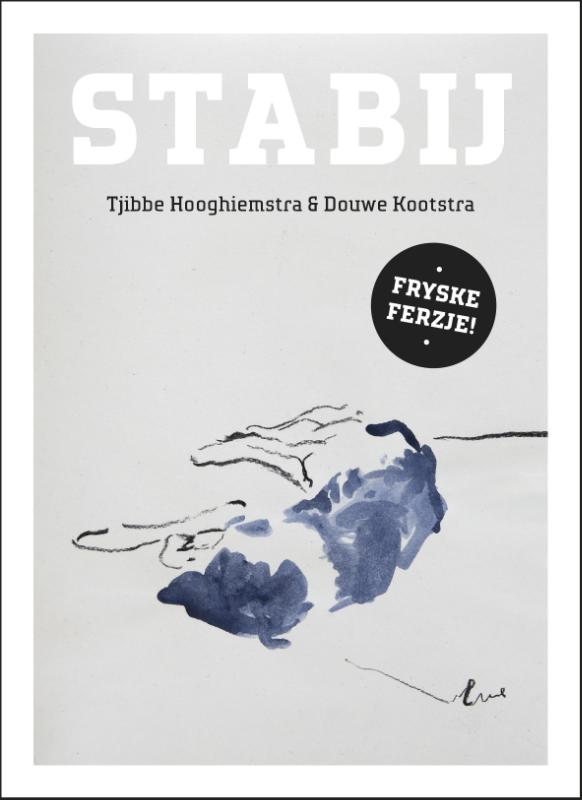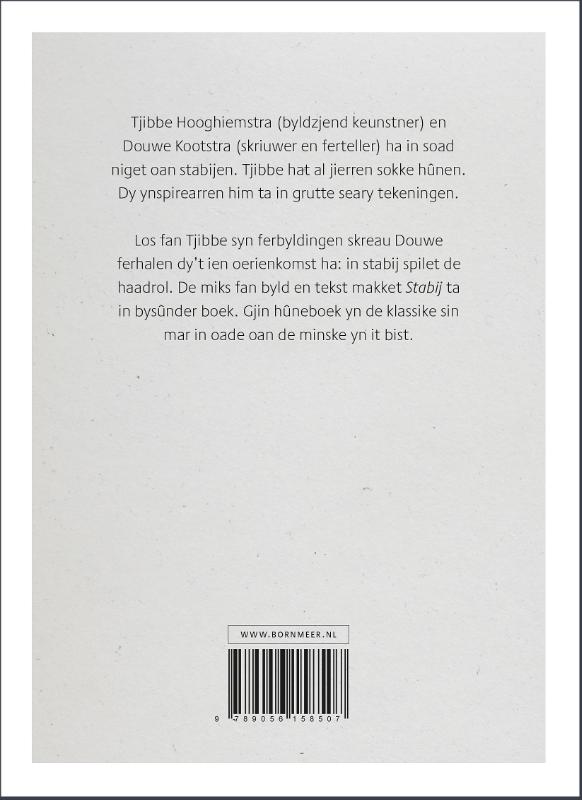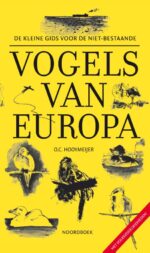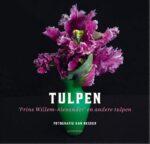Stabij
€ 17,90
Tjibbe Hooghiemstra (byldzjend keunstner) en Douwe Kootstra (skriuwer en ferteller) ha in soad niget oan stabijen. Tjibbe hat al jierren sokke hûnen. Dy ynspirearren him ta in grutte seary tekeningen.
Los fan Tjibbe syn ferbyldingen skreau Douwe ferhalen dy’t ien oerienkomst ha: in stabij spilet de haadrol. De miks fan byld en tekst makket Stabij ta in bysûnder boek. Gjin hûneboek yn de klassike sin mar in oade oan de minske yn it bist.
Gerelateerde boeken
-
De Kleine Gids voor de niet-bestaande vogels van Europa
€ 14,90Kunstenaar en amateurornitholoog O.C. Hooymeijer begeeft zich met het uitgeven van deze ‘Kleine Gids voor de niet-bestaande vogels van Europa’ op een voor hem nieuw terrein. Jarenlang veldwerk en onderzoek gingen vooraf aan het uiteindelijke resultaat: de beschrijving èn gedetailleerde illustraties van zo’n kleine vijftig gevederde vrienden. De auteur heeft een en ander zo getrouw als mogelijk weergegeven, doch er kunnen verschillen met de werkelijkheid optreden.
Momenteel is Hooymeijer bezig met het organiseren van geheel verzorgde reizen door Europa naar de leefgebieden van de in deze gids beschreven niet-bestaande vogels.Recensies:
Vlaardings Dagblad: ‘Een absolute must voor elke vogel- en kunstliefhebber’
De Oosterkerker Bode: ‘Beschrijvingen raak,illustraties zeer goed getroffen’
Natuur, Vis en Vogel: ‘Hooymeijer weet de lezer èn de kijker voor zich te winnen’ -
-
Victor Horta and the Frison House in Brussels
€ 19,90In the middle of the Lebeaustraat in Brussels, sandwiched between neo-Renaissance and neo-Gothic houses, stands an Art Nouveau jewel designed by Victor Horta: the Frison House. It was
commissioned by Maurice Frison, a lawyer and friend of the architect, and was built in 1894-1895. Horta designed not only the house, but also all its furniture and decoration, right down to the smallest detail: from door handles to marble fireplaces, from mosaic floors to elegant banisters, from wall lamps to the gratings for the cellar openings. The absolute eyecatcher is the winter garden, whose elegant design allows soft yellow light to flow subtly into its perfectly proportioned space.Nupur Tron is the author of this book and owner of the house. In recent years, she has breathed new life back into Horta’s masterpiece. She pieced together bits of the old chandeliers she found in one of the cellars. She had items of furniture designed by Horta lovingly restored. With great passion, she continues to search for the funds that will allow her to restore the entire house to its former glory, one step at a time.
Horta and the Frison House in Brussels is an ode to the architect and his creation.
Nupur Tron is from India. She studied Design, Marketing & Merchandising and Fine Arts at the Fashion Institute of Technology in New York. She designs jewellery, in which the different styles of east and west meet in harmony.
-





